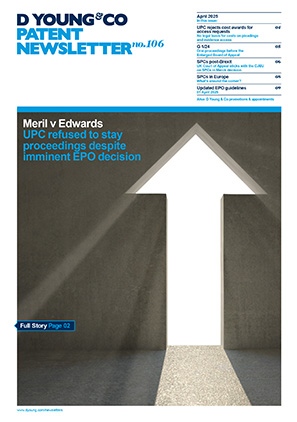Time to call ten days a day? EPO to scrap “ten-day rule” to reflect new digital age
CIPA has reported that the European Patent Office (EPO) has approved a proposal to scrap the ten-day rule – the regime for determining at what date documents are deemed notified for the purposes of calculating time limits.
This change, set to come into force on 01 November 2023, will do away with the ten-day rule implemented by Rule 126 and Rule 127 EPC which states that by default communications are deemed to have been notified ten days after they are issued. This ten-day period is currently provided to account for potential delays in the postal services and in practice provides an additional ten days to respond to a time limit set in such communications.
However, as part of the EPO’s digital transformation and recognising the increased use of electronic communication, the EPO has been considering removing this rule and replacing it with a different safeguard adapted from the PCT.
Having previously announced that this proposal would come into force even earlier and then subsequently shelving the proposal, it appears that the change has now been approved by the Administrative Council.
The ten-day rule
According to the current rules (which will remain in place until 01 November 2023) there is a legal fiction by which notification of a communication from the EPO is deemed to occur ten days after the date of the communication. This regime is in place to account for delays in postal services that were the primary means of these communications being transmitted when the rules were brought in. In the age of electronic communication the ten-day rule largely serves to provide an extra few days to meet certain time limits.
Notably, these additional days occur at the start of the period for responding, and so care should be taken when calculating time limits that these days are not added at the end of the period. It should also be noted that not all time limits before the EPO are set in communications in this way, and so for some time limits the ten-day rule does not apply at all.
This principle of the ten-day rule is illustrated in the timeline below. A communication is dated (in this case 03 October 2022) and issued by the EPO. The communication is expected to arrive within ten days of the date it was issued by the EPO (in this example this would be by 13 October 2022). A four-month time period is set to begin ten days after the date of the communication was issued, in this case, from 13 October 2022.

The proposal
Although full details of the change as it has been approved have not been published, under the EPO’s original proposed changes the ten-day rule would be scrapped, with time limits running from the date of the communication. This is shown in the timeline below, where the four-month time period begins on the date that the communication is issued. In this scenario the communication is expected to be received within seven days of issue, but this seven-day period is now included in the four-month time period.

The stated motivation for this change lay in the prevalence of electronic communication and the increased reliability of postal services, rendering these extra days unnecessary for mitigating against delays in documents reaching applicants or their representatives.
To provide a safeguard in case there are delays in the transmission of documents, we understand that the EPO is planning to bring in a safeguard measure similar to that provided under the PCT. Specifically, if the EPO could not show that a particular document reached its addressee within seven days of the date of the document, the period for reply would be extended by the number of days by which the seven days was exceeded.
This is shown in the example timeline below where a communication arriving 12 days after the date of the communication leads to an additional five days being added to the period to reply.

Conclusion
The removal of the ten-day rule will spell an end to a familiar regime for time limit calculations. While this will take some getting used to in the short-term, this change will lead to a simpler system for calculating time limits where all time limits can be calculated in the same way. We expect further information about this change to be available in due course.
